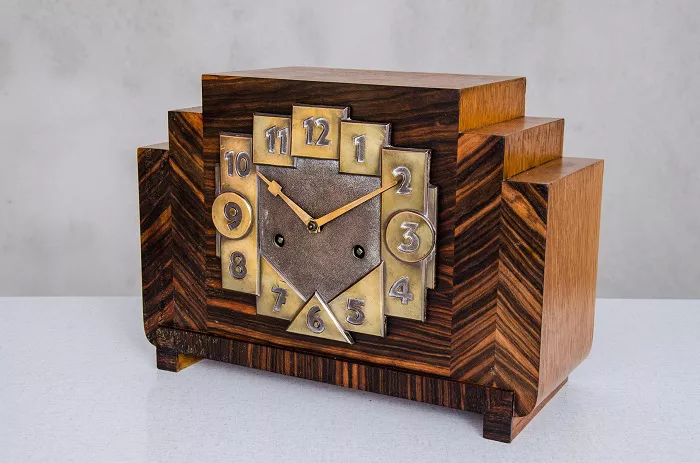Art Deco, the elegant and revolutionary design movement that blossomed during the 1920s and 1930s, left an indelible mark on everything from architecture and jewelry to furniture and ceramics. Genuine Art Deco pieces are prized for their craftsmanship, historical significance, and bold geometric aesthetics. But with mass reproductions flooding the market, how can collectors distinguish authentic vintage items from well-crafted modern imitations? This article outlines 9 definitive ways to evaluate whether an Art Deco piece is genuinely antique or simply a contemporary replica with retro flair.
1. Examine the Materials Used
True Art Deco pieces were produced with the finest materials available during the interwar period. The movement embraced both luxury and modernity, often combining exotic and industrial elements. Look for:
- Wood: Mahogany, walnut, and ebony were common, often inlaid with ivory or mother-of-pearl.
- Metals: Chrome, nickel, and brass were frequently used for lighting fixtures and furniture trims.
- Glass: Opalescent, etched, or frosted glass was popular in lamps and vases.
- Plastic: Bakelite and Catalin—early synthetic plastics—were used in jewelry and radios.
Modern reproductions often use MDF, plastic laminates, or synthetic finishes that mimic these materials poorly. Authenticity starts with substance.
2. Look for Maker’s Marks and Signatures
Many original Art Deco items were produced by now-famous designers and manufacturers who took pride in their work. Authentic pieces often bear the maker’s mark, logo, or signature, which can be found:
- Stamped into the metal base of lamps or sculptures
- Etched on the glass of mirrors and vases
- Branded or paper-labeled on furniture frames or underneath drawers
Renowned names to look out for include René Lalique, Émile-Jacques Ruhlmann, Clarice Cliff, and Donald Deskey. Verify signatures through reputable catalogues or databases like the Artnet artist database.
3. Evaluate the Construction Techniques
Mass-produced modern items are typically assembled quickly using automated processes. In contrast, Art Deco antiques show evidence of meticulous handcraftsmanship. For example:
- Dovetail joints in drawers and cabinetry indicate handmade assembly.
- Riveted rather than spot-welded or glued metal joins suggest age.
- Symmetry and balance are achieved with minimal machine precision, often yielding minor imperfections.
While no two pieces are exactly alike, high-end antiques exhibit consistency in craftsmanship, if not perfection in symmetry.
4. Analyze Patina and Surface Wear
Genuine Art Deco antiques exhibit wear that reflects decades of use. This includes:
- Mild tarnish or oxidization on metal surfaces, especially chrome and brass.
- Subtle scratches on wood finishes or Bakelite from years of handling.
- Uneven fading or slight crazing in glaze on ceramics.
Reproductions often simulate wear, but it tends to look artificial or too uniform. Natural patina tells a story that’s hard to counterfeit.
5. Cross-Check with Period Catalogs and Auction Records
Before finalizing a purchase, cross-reference the piece with period-specific catalogs, museum archives, and auction records. Many auction houses like Christie’s and Sotheby’s maintain digital archives where you can search by item type, artist, or era.
This kind of provenance research helps confirm not only the item’s authenticity but also its market value. Rare and well-documented items usually command higher prices and offer better investment returns.
6. Identify Iconic Art Deco Motifs
Art Deco was defined by its rich visual vocabulary. Learning to identify key motifs can help determine a piece’s legitimacy. Look for:
- Chevron and zigzag patterns
- Sunburst designs, often seen in mirrors and clocks
- Stepped forms inspired by Mayan pyramids
- Stylized flora and fauna, like panthers, gazelles, and peacocks
While many reproductions include similar motifs, authentic pieces often interpret these themes with sophistication and restraint, avoiding gaudy embellishment.
7. Study the Provenance and History
Antiques with a traceable history are often more credible. When buying, ask about:
- Previous ownership: Was the item part of a known collection?
- Purchase history: Are there receipts, appraisals, or photographs from past decades?
- Restoration records: Has the piece been altered or repaired?
Pieces with clear, documented backstories are harder to forge and more desirable to serious collectors.
8. Use UV Light and Chemical Tests Cautiously
Advanced collectors sometimes use tools like ultraviolet light or chemical swabs to test materials. For example:
- UV light: Can reveal repairs, later finishes, or artificial aging on Bakelite.
- Simichrome polish: Used to test Bakelite; a pink residue indicates authenticity.
However, these methods can be risky for delicate items and should be used sparingly and professionally. When in doubt, consult an expert conservator or appraiser.
9. Consult an Expert or Obtain a Certificate of Authenticity
No matter how well-versed you are, the eye of a trained professional can be invaluable. Certified appraisers, dealers, or museum curators often have access to data and methods unavailable to the general public. Before investing in high-value items:
- Request a Certificate of Authenticity (COA) from a reputable source.
- Consult with professional organizations such as the Appraisers Association of America.
- Attend trade shows and exhibitions to build familiarity and network with experts.
Expert authentication minimizes your risk and provides reassurance for future resale or insurance valuation.
Conclusion
Determining whether an Art Deco piece is truly antique is a process that blends art, science, and instinct. By studying the materials, craftsmanship, wear patterns, and provenance, collectors can make informed judgments and avoid costly mistakes. Whether you’re acquiring a Lalique vase, a Gilbert Rohde desk, or a Clarice Cliff teapot, let your passion be guided by diligence. Authenticity isn’t just about age—it’s about integrity, history, and enduring beauty.
In a world of convincing reproductions, your best tools are education, attention to detail, and a commitment to understanding what makes each piece genuinely Art Deco—and truly antique.

